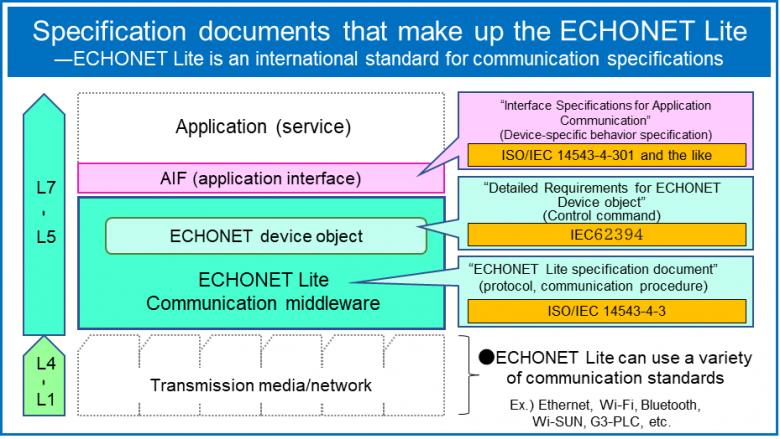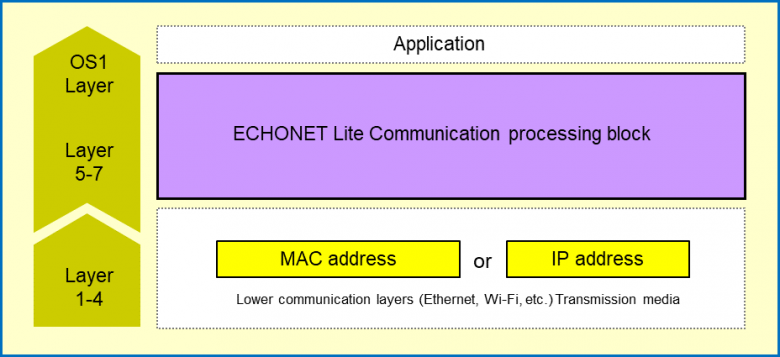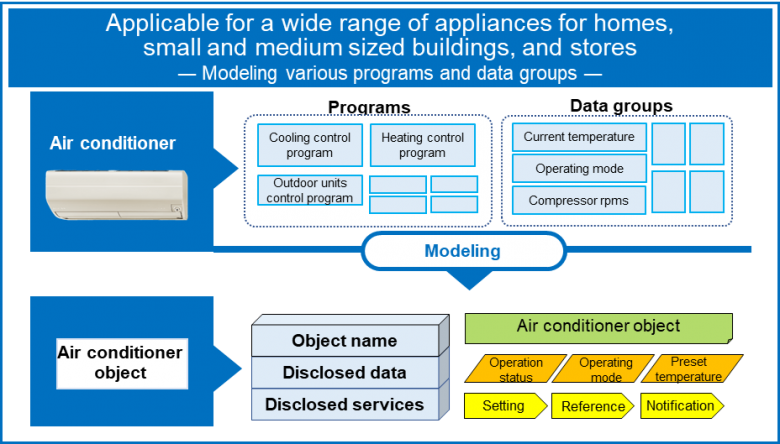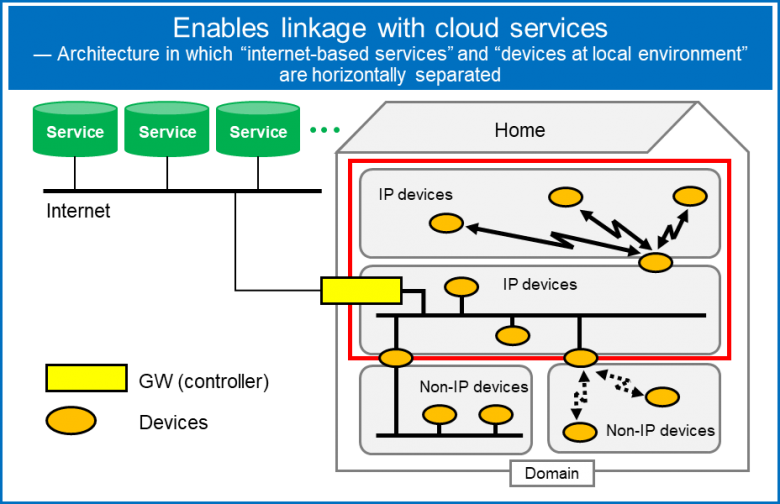| Class group code |
Class group |
Examples |
| 0×00 |
Sensor-related device class group |
Fire sensors, motion detection sensors, temperature sensors, CO2 sensors, current sensors, etc. |
| 0×01 |
Air conditioner-related device class group |
Air conditioners, fans, ventilation fans, air cleaners, heating carpets, oil fan heaters, commercial-use package air conditioners, etc. |
| 0×02 |
Housing/facilities-related device class group |
Electric shades/curtains, water heaters, electronic locks, smart meters, solar power generators, storage batteries, fuel cells, general lightings, single function lightings, emergency lights, lighting systems, expansion lighting system, etc. |
| 0×03 |
Cooking/Household-related Device Class Group |
Microwave oven, dishwashers, dish drying machines, washing machines, clothes drying machines, commercial-use refrigerated display cases, etc. |
| 0×04 |
Health-related device class group |
Scales, body fat analyzers, thermometers, blood pressure monitors, blood glucose meters, etc. |
| 0×05 |
Management/operation-related device class group |
Controllers, switch (HA equipment), etc. |
| 0×06 |
Audiovisual-related device class group |
Television, display, etc. |




